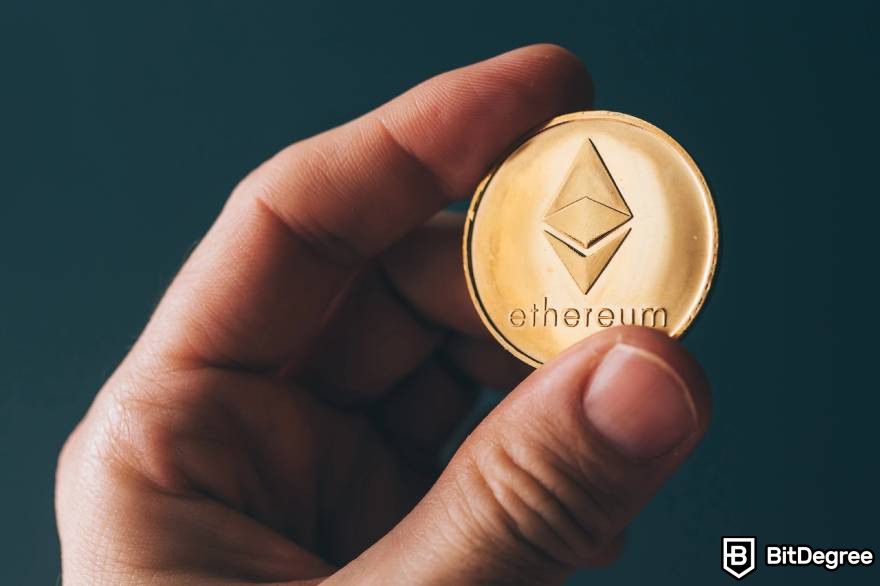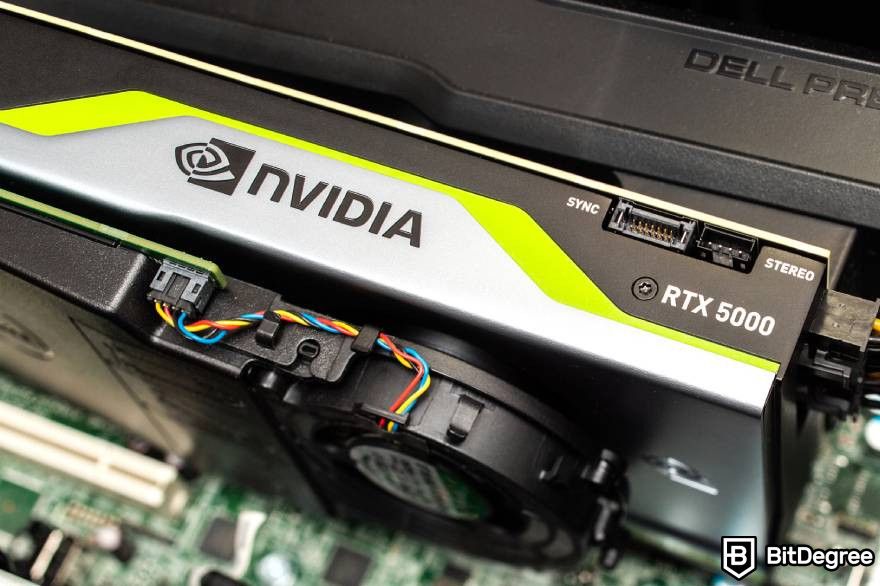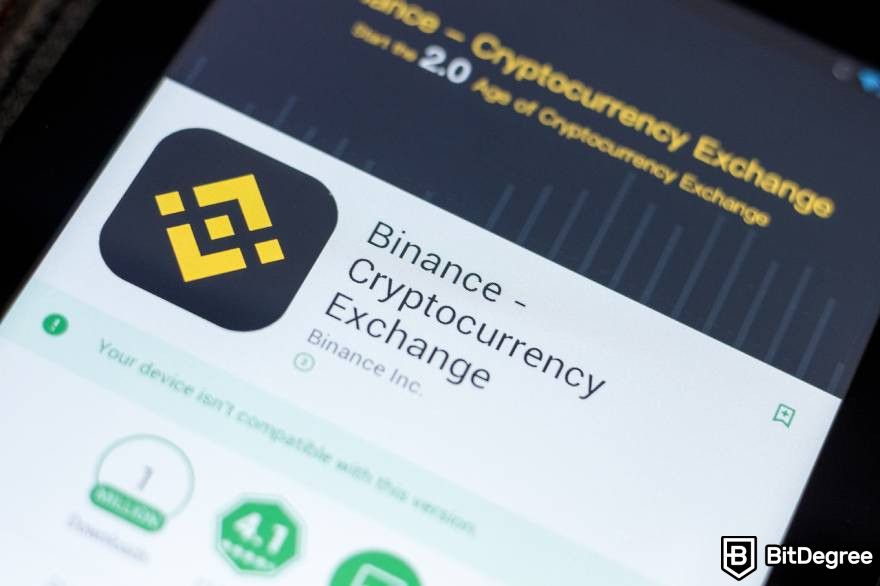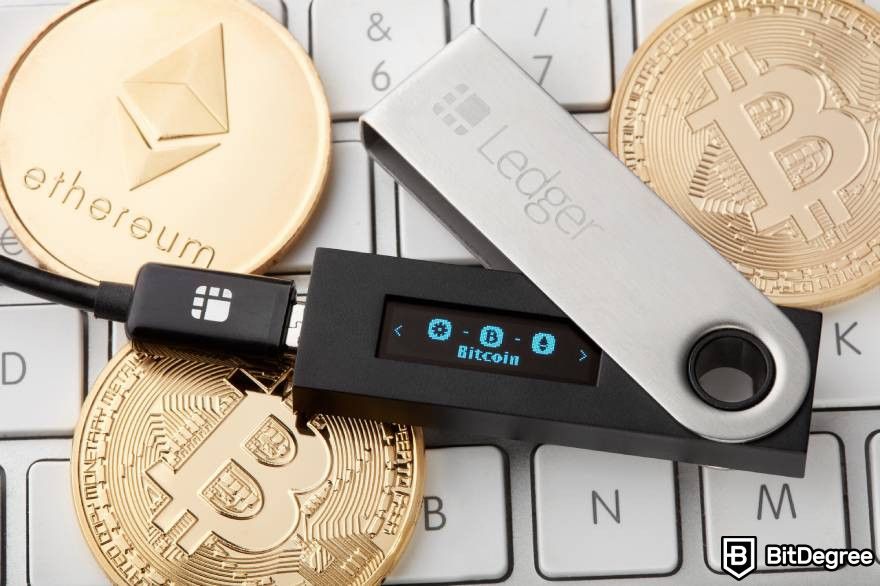Key Takeaways
- Web3 offers new investment opportunities, including cryptocurrencies, NFTs, and stocks of Web3 companies;
- While unlocking many new possibilities, Web3 comes with security, regulatory, and market risks;
- To navigate Web3 investments with confidence, conduct thorough research, understand your risk tolerance, use the right tools, and consult with a financial advisor.
Stop overpaying - start transferring money with Ogvio. Sign up, invite friends & grab Rewards now! 🎁
The emergence of Web3 is transforming the financial world. This new phase of the internet revolutionizes transactions and creates innovative investment opportunities. If you're curious about how to invest in Web3, you've come to the right place!
I'll help you understand the basics you need to know before delving into Web3 investments. We'll also explore the most common asset types and the exciting possibilities of leveraging them for potential gains.
Web3 definitely has huge potential, but it's important to be cautious. When choosing a trading platform, it's best to go for reputable exchanges known for security and reliability, like Binance, Kraken, or Bybit. And remember, before making any important investment decisions, it's always a good idea to consult with a financial advisor.
That said, let's dive into the exciting possibilities that the new internet era has to offer!

Did you know?
Subscribe - We publish new crypto explainer videos every week!
What is Uniswap? (UNI Token Explained With Animation)


Table of Contents
- 1. Before Starting Web3 Investments
- 1.1. What is Web3 Investment?
- 1.2. Why Do People Invest in Web3?
- 2. How to Invest in Web3: New Investment Horizons
- 2.1. Cryptocurrency
- 2.2. Web3 Stocks
- 2.3. NFT Projects
- 3. Best Web3 Investment Practices
- 3.1. Conducting Thorough Due Diligence
- 3.2. Understanding Your Risk Tolerance
- 3.3. Choosing the Right Tools
- 4. Potential Risks of Web3 Investments
- 4.1. Security Risks
- 4.2. Regulatory Risks
- 4.3. Market Volatility Risks
- 5. Conclusions
Before Starting Web3 Investments
Before diving deeper into how to invest in Web3, let’s take a moment to set the stage.
Latest Deal Active Right Now:Imagine a decentralized world where the internet returns power to individuals rather than central authorities. This new era, often termed Web3, pledges to empower users by granting them greater control over their data.
In the Web3 era, decentralization is key, granting users complete control over their data, including identifiers, tokens, and ownership. By moving away from centralized authorities, Web3 creates a landscape where applications and services flourish on blockchain technologies[1].
This shift fosters transparency, security, and user autonomy, making the internet more user-centric.
But what does this entail for you as an investor? How can you tap into this growing market? Let's examine why Web3 investments have so much potential going forward.
What is Web3 Investment?
Investing in Web3 involves allocating funds to technologies and assets that will shape the future of the internet. It uses blockchain technology to create decentralized networks and provides various investment opportunities within this framework.

So, how to invest in Web3? Well, there are multiple options, each distinct from the others. But I'll explore them all in detail later.
For now, think of it this way: You can invest in the companies building the infrastructure for this new internet or participate in the ecosystem by buying cryptocurrencies or NFTs.
Why Do People Invest in Web3?
Investing in Web3 is not just about chasing the latest trend; it’s about positioning yourself at the forefront of a technological revolution. Here’s why this can be a promising avenue.
Utilizing Decentralization's Potential
Decentralization lies at the heart of Web3. Unlike traditional systems controlled by central entities, Web3 distributes transactions and operations across a network, democratizing access and power.
This shift from centralized control empowers individuals and communities, fostering a more equitable and inclusive digital ecosystem.
By utilizing blockchain technology, Web3 offers true ownership of digital assets. This means investors can securely buy, sell, and trade their assets without intermediaries, opening up new investment possibilities.

In addition, by prioritizing user ownership of data, Web3 enhances privacy, security, and control over data. This reduces the risk of identity theft and manipulation.
In essence, Web3's decentralization promotes transparency and security and a more democratic and user-centered internet. This shift empowers individuals, granting them greater control over their interactions and digital assets within the web.
Seizing Growth Opportunities
Investing early in Web3 presents an exciting opportunity to tap into the future growth of this rapidly expanding market.
As of 2023, the global Web3 market was valued at $2.25 billion, and projections indicate a remarkable compound annual growth rate (CAGR) of 49.3% from 2024 to 2030.
This anticipated growth is fueled by various factors. These factors include the increasing demand for data privacy enabled by Web3's decentralized identity and the growing adoption of digital assets like cryptocurrencies.
With such promising market potential, early investors who understand how to invest in Web3 can take advantage of these trends and potentially achieve significant financial gains.
Encouraging Innovation and Creativity
Web3 technology transforms the digital landscape by creating an ecosystem where users can read, write, and own their data. Individuals can effectively manage and control their information using public and private keys[2], bringing in a new era of innovation and creativity.
This change opens up a whole new world of possibilities for creative ideas and innovations across different fields, from finance to healthcare.
So, what do Web3 investments mean for you? Well, it's not just about putting money into projects; it's about getting behind a movement disrupting the digital landscape.
By supporting projects that push the envelope, you'll be at the forefront of this wave of innovation, helping shape the future of the internet.
How to Invest in Web3: New Investment Horizons
Now that we've covered the revolutionary impact of Web3, let's examine how you can take advantage of this transformative technology. Whether you're a curious beginner or a seasoned investor, understanding how to invest in Web3 can unlock many exciting opportunities.
Here, I'll explore the most common Web3 asset classes: cryptocurrencies, stocks, and NFTs. Each offers unique avenues for participation in this ever-evolving landscape.
Cryptocurrency
Cryptocurrencies are changing the way we think about finance. They’re built on secure and transparent blockchain technology, offering more than just a way to buy things. Their real potential is in the broader Web3 ecosystem.
Within the crypto landscape, Bitcoin paved the way. As the first successful and most established cryptocurrency, it's a great starting point for exploring Web3 investment opportunities.

On the other hand, Ethereum sets itself apart by offering more than simply a digital currency. It acts as a blockchain for constructing decentralized applications (dApps), opening up fresh investment possibilities. And don’t even get me started on the variety of other crypto assets or ecosystems and their use cases.
So, how can you leverage cryptocurrencies for Web3 investment? There are several methods, including trading, staking, and mining. Let’s break down these methods so you can choose the approach that aligns with your goals.
Trading Cryptocurrencies
Probably the most popular Web3 investment method is trading cryptocurrencies on exchanges. This involves buying and selling cryptos to profit from price fluctuations. There are two main approaches:
- Short-Term Trading: This strategy focuses on quick buying and selling, usually within seconds to days, to capitalize on rapid price movements. It can be lucrative but comes with a high risk. You'll need a strong understanding of the market, technical analysis skills, and the ability to make fast decisions under pressure.
- Long-Term Trading: This approach involves buying and holding cryptos for months or years, expecting their value to increase over time. It's generally less stressful and time-consuming than short-term trading, allowing you to focus on long-term growth potential.
Regardless of your strategy, staying current on market trends and news is crucial for making sound investment decisions.
Staking
Staking cryptocurrencies offers another way for you to participate in Web3 investments. This method works with Proof-of-Stake (PoS) blockchains, where you "stake" your coins to validate transactions and secure the network. In return, you earn rewards in the form of additional coins.
Think of it as a crypto savings account with potentially higher returns. Staking generally carries less risk than trading, making it an attractive option for many investors.
Consider Ethereum's PoS mechanism as an example. When you stake ETH, there's a chance you'll be selected to validate transactions and create new blocks. If your proposed block gets accepted and incorporated into the chain, you receive additional Ethereum as a reward.

In general, crypto staking is an appealing investment option in the Web3 ecosystem. It allows you to earn rewards while supporting blockchain networks' decentralization and security. Of course, like any other type of investing, it has its own risks.
Mining
Cryptocurrency mining involves using computational power to validate transactions and maintain the security of the blockchain network. Miners compete to solve complex mathematical equations, with the first successful miner being rewarded with newly minted coins.
Briefly put, too begin mining, you need to select a cryptocurrency and set up the required hardware. Then, you need to install compatible mining software. You might also want to consider joining a mining pool to enhance your chances of earning rewards by combining computational resources with other miners.
However, it's important to note that mining can involve a substantial initial investment in hardware and energy expenses. If you choose this path, conduct thorough research to understand the necessary equipment and associated costs before diving in.
Web3 Stocks
Web3 stocks offer an alternative entry point for those more comfortable with traditional investments. These represent companies at the forefront of developing and implementing new internet technologies. Here are three examples of Web3 stocks:
- Nvidia (NVDA): This technology giant is renowned for its high-end graphics and video processing chips, which are crucial for many Web3 applications. No matter which form of Web3 we’re talking about, it will probably depend on Nvidia's processing power.
- Meta Platforms (META): Social media giant Meta Platforms, home to Facebook, WhatsApp, Messenger, and Instagram, is taking a bold step towards Web3. The company is actively developing a metaverse, a virtual world that integrates blockchain and AI technologies.
- Block (SQ): This financial services company facilitates Bitcoin trading through its Cash App. Their subsidiary, Spiral, further strengthens their commitment to Web3 by developing open-source projects designed to solidify Bitcoin's role in the future of finance.
The key to selecting Web3 stocks lies in their level of commitment. Are they simply experimenting or genuinely integrating Web3 into their core business models?

Finding companies with a clear Web3 vision is essential to learning how to invest in Web3 stocks, as these companies are likely to succeed in the long run.
Once you've identified some promising companies, the next move is to open a brokerage account. This lets you research and buy their shares.
The key is to monitor these companies' performance and broader trends in the Web3 market. You may also need to spread your investments across different companies to lower your risk and boost your chances of success.

Did you know?
Subscribe - We publish new crypto explainer videos every week!
What is ENS? Ethereum Name Service Explained (ANIMATED)


NFT Projects
Non-fungible tokens (NFTs) are one of the best Web3 investment opportunities. NFTs are unique digital assets that represent ownership of a specific item, such as digital art, music, a domain name, or a real-world asset.
NFTs hold the potential to revolutionize digital ownership by offering clear, secure, and transferable property rights. This paves the way for a robust marketplace for digital goods, attracting creators, collectors, and investors[3].

Similar to collecting physical art or rare items, the value of an NFT often hinges on its rarity and demand. Thus, before you invest, you should look into the creator's reputation, the uniqueness of the asset, and the community's support.
So, how to invest in NFTs? First, you must create an account on a marketplace. A good place to start is the one offered by Binance. Despite being primarily a crypto exchange, the platform provides a user-friendly NFT marketplace with a wide variety of digital art, collectibles, and more.
Best Web3 Investment Practices
Investing in Web3 can be rewarding, but like any other investment, it comes with inherent risks. To navigate this new and exciting space, it’s important that you stick to basic best practices. So, let’s discuss how to invest in Web3 safely to increase your chances of success.
Conducting Thorough Due Diligence
One of the most crucial steps in any investment strategy, especially in the volatile world of Web3, is conducting due diligence. It means thoroughly researching the product or asset you're considering investing in.
Here are some key aspects that you must thoroughly analyze to understand how to invest in Web3 smartly.
Assessing the Market
Before investing, take a step back to understand the Web3 market landscape. You need to analyze its current size and growth potential, as well as identify the key trends shaping the market.

To stay in the loop, you can join Web3 communities on social media and participate in forums. It's also a good idea to follow news from trustworthy sources, like the BitDegree news portal. Doing this will give you a feel for where the market is going and which areas are becoming more popular.
You'll be better equipped to identify the best Web3 investments by staying updated and building a comprehensive knowledge base.
Assessing the People
Understanding how to invest in Web3 involves evaluating the company or the team driving the innovation. Here’s what you need to consider:
- Reputation: Research their overall reputation and track record in the market. A history of success can bode well for their Web3 ventures.
- Expertise: Do they have the necessary knowledge and expertise for success in the Web3 space? Look for indications that they comprehend blockchain technology and decentralized systems.
- Partnerships: Strong collaboration with other established Web3 firms can bring vital resources, experience, and market access.
Whether you're considering investing in cryptocurrency, NFTs, or Web3 stocks, thoroughly evaluating the people behind the project is essential. This involves more than just looking at resumes; it's about understanding their experience, track record, and expertise in the specific area.
Additionally, look for transparency in their communication and a clear passion for the project's goals. Gaining these insights into the human element will better equip you to assess the project's future success.
Assessing Regulatory Risks
One of the best Web3 investment practices is to consider the regulatory landscape and associated risks. These factors play a crucial role in the scalability of Web3 projects.

Considering that Web3 is still new and evolving, regulations can vary significantly across regions. Therefore, it's essential to ensure that the project complies with relevant laws and regulations.
Additionally, you may need to explore the company's ability to manage risks and influence regulatory changes. Take a close look at the project's risk management procedures, governance, and dependencies on other Web3 initiatives.
Assessing the Technology
You need to evaluate the feasibility and effectiveness of the technologies used in a project. Assess their potential impact, scalability, performance, and security against cyber threats.
This may involve examining various aspects such as the protocol, smart contracts, exposure to bridges, application layer, and security features.
You should also evaluate the project's whitepaper. It provides detailed information about the technology, its use case, and how it stands out from competitors. Look for innovative solutions and unique features that give the project an edge.
Assessing the Business
A clear and viable business model is crucial for a successful Web3 investment. It’s essential to assess how the project intends to generate revenue and ensure sustainability. Take a closer look at its strategic roadmap to determine if its plans for growth and development are realistic.

Understanding how to invest in Web3 also involves evaluating the project's ability to adapt and scale over time. A strong grasp of the project's economic model, aligned with tokenomics, is essential for making informed decisions.
Furthermore, examining the project's community engagement can offer insights into adoption rates and developer activity beyond speculative interest. This comprehensive evaluation will provide a clearer view of the project's viability and long-term potential.
Understanding Your Risk Tolerance
Learning how to invest in Web3 smartly also means understanding your risk tolerance. Given the high volatility of these digital investments, it's vital to determine how much risk you're comfortable with.
Your risk tolerance is essentially your ability and willingness to handle market fluctuations without feeling overly stressed or making impulsive decisions. It's a personal gauge of how comfortable you are with taking investment risks and dealing with uncertainty.
Here are some key considerations that influence your risk tolerance:
- Financial Targets: Your objectives play a significant role in determining your risk tolerance. For example, if you're investing for retirement, you might be more open to taking on higher risks.
- Investment Horizon: How long you intend to hold your investments can also impact your risk tolerance. Usually, the longer your investment timeframe, the more risk you can afford to take.
- Financial Situation: Your current financial circumstances, including your income, expenses, and savings, also influence your risk tolerance.
- Emotional Resilience: Some investors are better equipped to handle market volatility than others. You may have a lower risk tolerance if you tend to feel anxious or panicked during market downturns.
- Knowledge and Experience: Your familiarity and your past experiences in financial markets can shape your risk tolerance.
Understanding your risk tolerance is key to developing a personalized approach to how to invest in Web3 assets. This ensures you allocate funds to align with your objectives and comfort level. Based on their risk tolerance, investors are typically classified as aggressive, moderate, or conservative. Let’s talk about these investor types a bit.
Aggressive Investors
Aggressive investors prioritize maximizing returns, even if it means taking on significant risk. They understand the possibility of losing money, but they're comfortable with that trade-off for the chance of much higher gains.

This often leads them to invest in volatile assets where prices can swing dramatically but also offer the potential for substantial growth.
Moderate Investors
Moderate investors prioritize a balanced approach, seeking to grow their wealth while minimizing risk. They achieve this through diversification, often allocating their portfolio across growth-oriented assets and more stable options.
This strategy allows them to benefit from potential market gains while mitigating losses during downturns.
Conservative Investors
Conservative investors prioritize capital preservation and minimizing losses. Safety and stability come first, even if it means lower returns. This leads them to favor guaranteed or low-risk investment options.
Choosing the Right Tools
Having the right tools at your disposal is crucial when looking for the best Web3 investment opportunities. Whether investing in cryptocurrencies, NFTs, or Web3 stocks, utilizing the proper platforms and resources can make all the difference.
Cryptocurrency Exchanges
When choosing a cryptocurrency exchange, focus on finding a platform known for its solid security, reasonable fees, and wide range of offerings.
Security should always come first! Look for features like two-factor authentication (2FA), regular security audits, and a good track record of protecting user assets.

Fees are an important factor, too. Transaction costs can add up quickly, so compare trading, deposit, and withdrawal fees across different exchanges. Some platforms even offer tiered fee structures based on your trading volume, which can help you save money.
In addition, consider the variety of cryptocurrency options. A broader selection gives you more investment flexibility. Look for a mix of well-established coins, emerging projects, and tokens specific to Web3.
If you're looking for a platform that balances all these factors, consider Binance, Kraken, or Bybit. These exchanges offer a wide range of cryptocurrencies, competitive fees, and robust security measures, making them excellent options for those learning how to invest in Web3 smartly.
Crypto Wallets
Crypto wallets do more than securely store and manage your cryptocurrencies; they empower you to control your digital assets completely. As Web3 evolves, these wallets become essential tools for navigating the decentralized web. They provide robust security features, protecting your assets from unauthorized access and cyber threats.

A reliable crypto wallet, such as the Ledger Nano X or Trezor Safe 5, is crucial for anyone looking to navigate and capitalize on the expanding digital economy securely and effectively.
These wallets provide advanced security features, user-friendly interfaces, and support for a wide range of cryptocurrencies. They're essential for managing investments, conducting transactions, and accessing various blockchain-related services.
NFT Marketplaces
If you're going to invest in NFTs, it's essential to use a reputable marketplace. These platforms allow you to buy, sell, and trade a wide range of digital assets.
When choosing a marketplace, consider factors such as user interface, transaction fees, and the variety of NFTs available. Look for popular platforms that offer a wide selection of digital assets, like Binance NFT or OpenSea.
Potential Risks of Web3 Investments
Investing in Web3 can be incredibly rewarding, but it's essential to recognize and understand the potential risks involved. Whether you're investing in cryptocurrencies, NFTs, or stocks, acknowledging these risks is key to understanding how to invest in Web3 wisely.
So, let’s cover the primary risks associated with Web3 investments, including security, regulatory, and market volatility risks.
Security Risks
One of the most significant risks in Web3 investments is security. With its decentralized nature, your assets could be compromised in many ways.
Hackers often target exchanges, wallets, and dApps to steal funds. Therefore, it's crucial to use strong security measures like 2FA, robust wallets, and secure passwords to keep your investments safe.
Smart contract bugs can pose a considerable risk and be exploited, leading to significant financial losses. To mitigate this, always thoroughly research the projects you invest in and ensure they have undergone third-party security audits.

Another common threat is phishing attacks. Phishing involves tricking users into revealing sensitive information, like private keys for crypto wallets, by pretending to be trustworthy. These attacks often come as emails, messages, or fake websites that look like real ones.
To protect yourself from phishing, it's crucial to always double-check URLs and be cautious of unsolicited messages asking for personal information. Never share your private keys or passwords with anyone, and be wary of offers that seem too good to be true.
Regulatory Risks
It's important to analyze regulatory risks to understand how to invest in Web3 safely. The rules around cryptocurrencies, NFTs, and other digital assets are still developing and can vary from one country to another. New laws or regulations can affect the value of your investments or even limit your ability to trade certain assets.
For example, selling and transferring digital assets often fall under securities laws, which are complex and vary widely by location. It's essential to carefully research and understand these laws before getting involved in such transactions.
Another big challenge is protecting user data and complying with privacy regulations. The decentralized nature of Web3 also makes it tricky to stick to copyright and intellectual property laws, which can create legal risks and privacy concerns for everyone involved.
Therefore, it's crucial to stay informed about regulatory developments and understand the legal environment in your location. This will help you better understand how to invest in Web3 while minimizing potential legal risks.

- Secure and reliable
- Accepts fiat currencies
- Lots of trading options
- Reputable exchange
- Accepts fiat currencies
- Offers various trading options

- Huge trading variety
- Regulation-compliant around the globe
- Fair trading fees
- Beginner-friendly
- A wide array of features
- Vast number of different crypto coins & tokens

- Beginner-friendly
- Secure
- Decent trading and withdrawal fees
- Crypto.com Visa Card
- Automated tools & bots
- Ecosystem synergy with CRO
Market Volatility Risks
Volatility risks are a part of any investment, and Web3 is no different. The value of digital assets can be very volatile, with prices swinging dramatically in short periods, especially due to negative news[4].
While this volatility can present opportunities for higher returns, it also carries the risk of significant losses. It's like a thrilling roller coaster ride. The potential for sharp drops and climbs accompanies the excitement.
There are strategies to navigate the market's unpredictable nature. Diversifying your portfolio across different types of Web3 assets can help mitigate some of these risks.
Staying updated with the latest news and market analysis is also crucial. This can provide valuable insights that aid in making timely investment decisions, which are an essential aspect of effective Web3 investing.
Conclusions
The new generation of the internet offers exciting investment opportunities, including cryptocurrencies, NFTs, and Web3 stocks. However, knowing how to invest in Web3 goes beyond simply choosing an asset. Your success depends on understanding different asset types and staying informed about market trends.
To thrive in this new market, it's important to stick to the best practices for Web3 investments. One important practice is doing your due diligence on each project before investing. Take the time to thoroughly research the team, technology, and market potential of your chosen assets.
Additionally, having the right tools to navigate the market is also essential. Choosing robust wallets like the Ledger Nano X or Trezor Safe 5 can help protect your investments from security risks and manage them more effectively.
Web3 is a space filled with potential; approaching it with knowledge and caution is important. By following these guidelines, I hope you can confidently venture on your investment journey and seize the opportunities that come your way!
The content published on this website is not aimed to give any kind of financial, investment, trading, or any other form of advice. BitDegree.org does not endorse or suggest you to buy, sell or hold any kind of cryptocurrency. Before making financial investment decisions, do consult your financial advisor.
Scientific References
1. Q. Wang, R. Li, Q. Wang, et al.: ‘Exploring Web3 from the view of blockchain’;
2. R. Huang, J. Chen, Y. Wang, et al.: ‘An overview of Web3 technology: Infrastructure, applications, and popularity’;
3. S. Li, Y. Chen: ‘How nonfungible tokens empower business model innovation’;
4. H. Gupta, R. Chaudhary: 'An empirical study of volatility in cryptocurrency market'.









